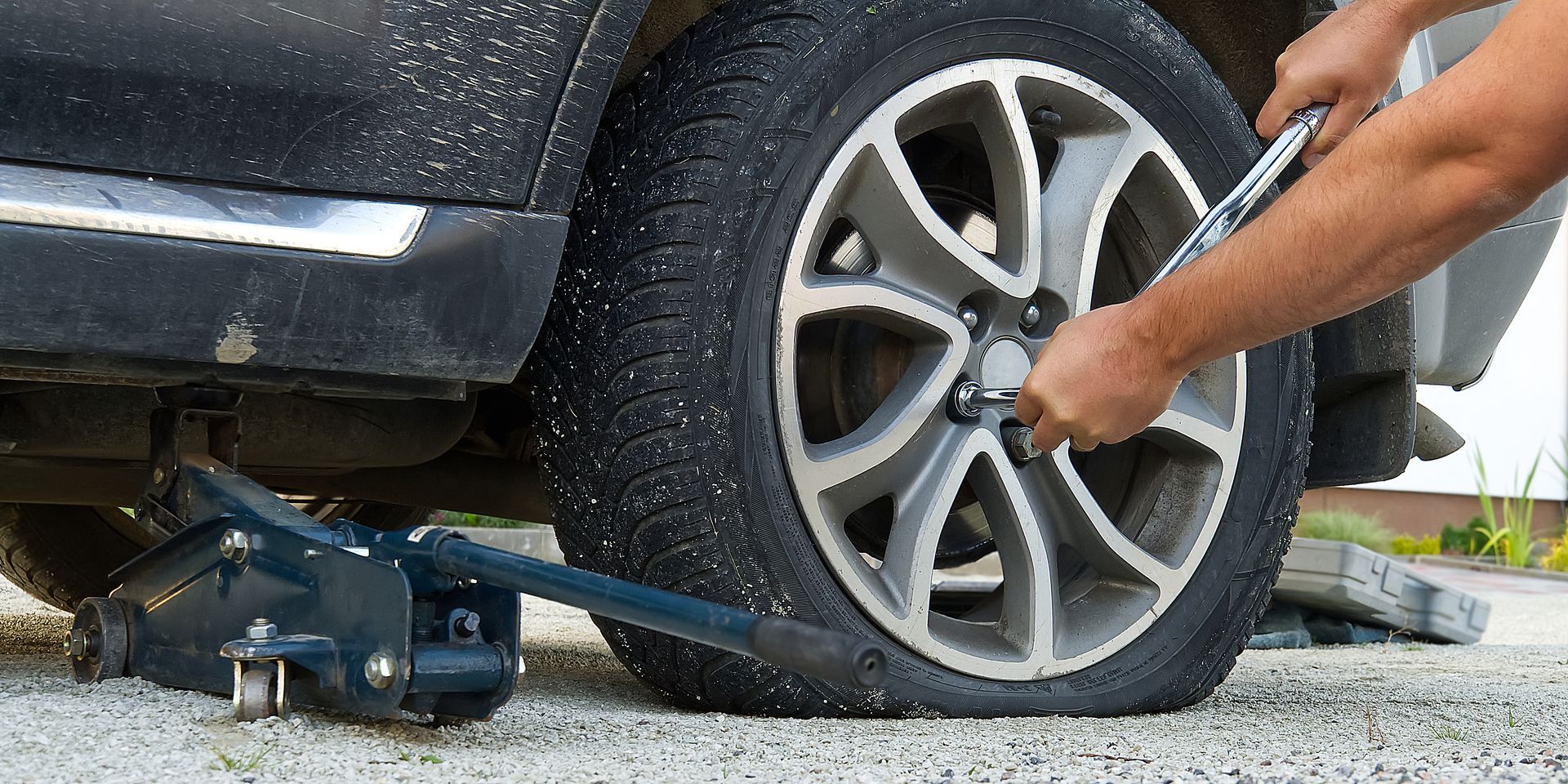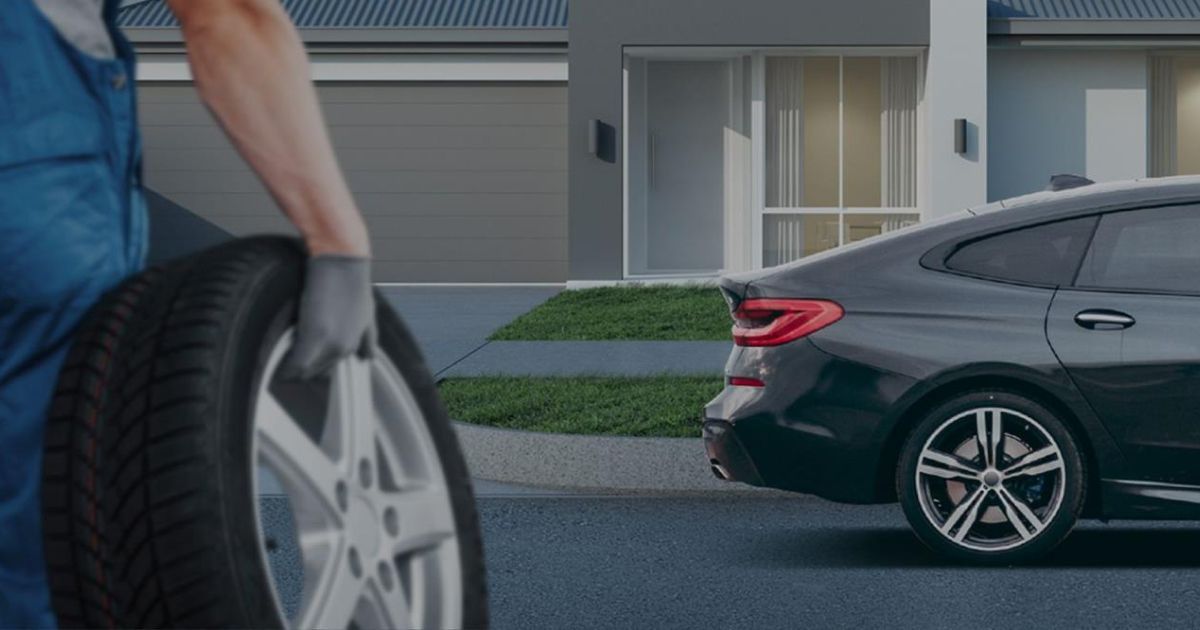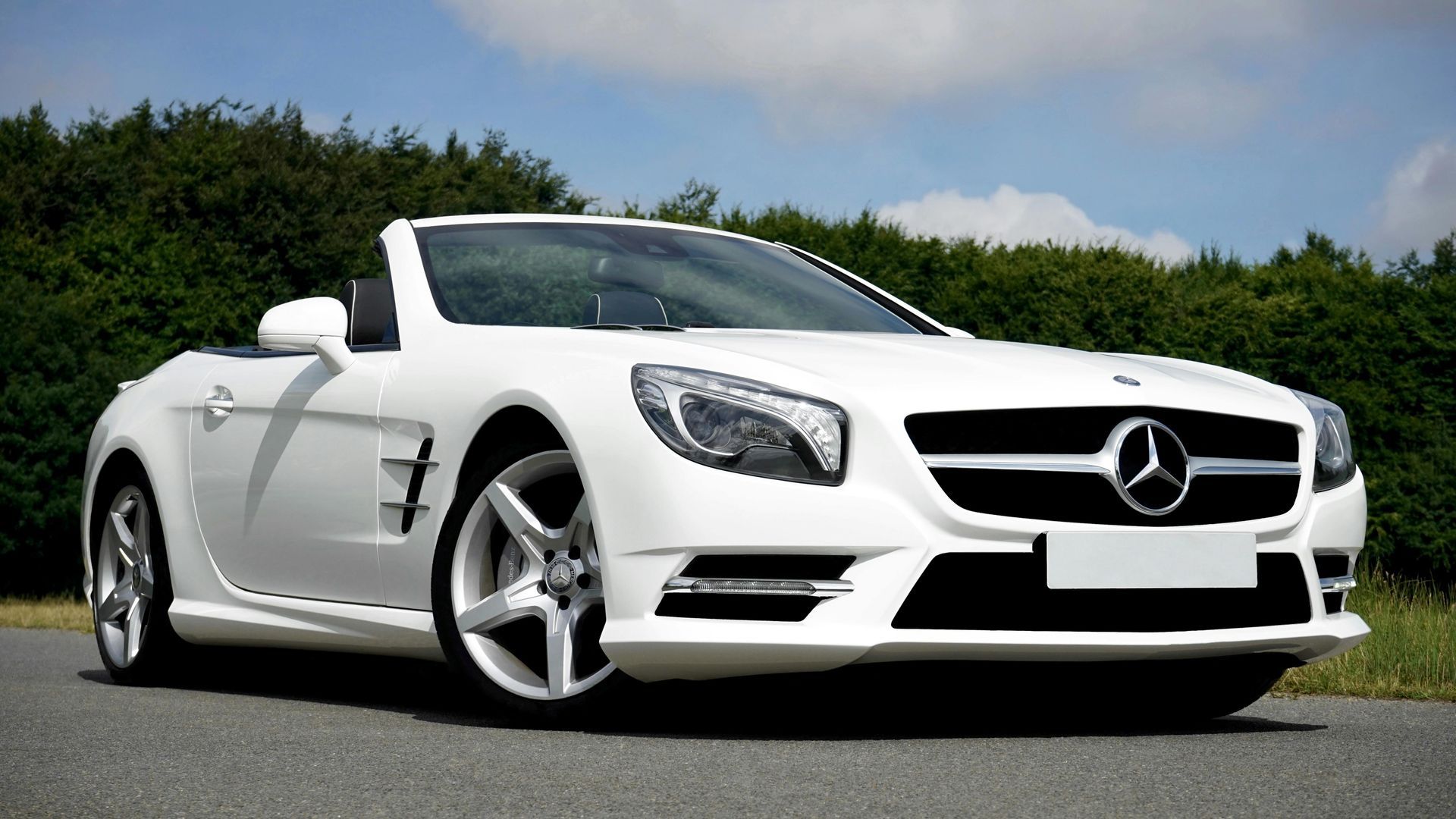Are you tired of dealing with flat tires in Phoenix? You're not alone. The scorching heat and extreme temperatures in the city contribute to a high number of flat tires on the roads. Understanding the causes of this common issue is crucial for every driver in Phoenix.
The intense heat in Phoenix puts excessive pressure on tires, leading to premature failure and blowouts. This problem becomes even more prevalent during the summer months when temperatures soar and Excessive Heat Warnings are in effect. As a result, drivers often find themselves stranded on the roadside, in need of assistance with their flat tires.
But why is Phoenix particularly susceptible to flat tires? The answer lies in the combination of the hot desert climate and the condition of the roads. The extreme heat causes the air inside the tires to expand, which increases pressure and puts stress on the rubber. Additionally, rough or poorly maintained roads with debris and potholes contribute to faster tire wear and an increased risk of punctures.
So, what can you do to prevent flat tires in Phoenix? Ensuring regular tire maintenance is crucial to keep your tires in good condition and reduce the risk of flats. This includes regular tire rotations, proper inflation, and promptly repairing any punctures. Tire repair services in Phoenix like LugWrench Heros can assist with these maintenance tasks, ensuring that you stay safe on the road.
Key Takeaways:
- The extreme heat in Phoenix contributes to a high number of flat tires on the roads.
- Tire blowouts and premature failure are more common during the summer months.
- Regular tire maintenance, including tire rotations and proper inflation, is essential to prevent flat tires.
- Rough or poorly maintained roads with debris and potholes increase the risk of tire punctures.
- Tire repair services in Phoenix can help with tire maintenance and prompt repairs.
The Impact of Heat on Tires in Phoenix
In Phoenix, the scorching temperatures can have a significant impact on tire performance. When the temperature reaches extreme levels, the air inside the tires expands, leading to increased pressure. This extra pressure can cause tires to fail, resulting in blowouts and flat tires. It is crucial to regularly check and maintain proper tire pressure to prevent these issues.
To illustrate the impact of heat on tires, consider the following scenarios:
- Scenario 1: On a scorching summer day in Phoenix, with temperatures soaring above 100 degrees Fahrenheit, you hop in your car to run errands. As you drive, the heat from the sun and the hot pavement cause the air inside your tires to expand dramatically. Without proper tire pressure monitoring and maintenance, the increased pressure can push your tires to their limits, ultimately resulting in a tire blowout.
- Scenario 2: You park your vehicle in the scorching Arizona heat for an extended period. During this time, the heat continues to penetrate your tires, causing them to rapidly lose air pressure. As a result, when you hit the road again, your underinflated tires are more susceptible to damage and increased rolling resistance, making it harder to control your vehicle and potentially leading to a flat tire.
To mitigate the impact of heat on tires in Phoenix, it is essential to take preventive measures. Regularly check your tire pressure using a reliable gauge and make sure it aligns with the manufacturer's recommendations. Additionally, avoid parking your vehicle in direct sunlight for extended periods, as this can accelerate the heat buildup in your tires. By staying proactive and maintaining proper tire pressure, you can reduce the risk of tire blowouts and flat tires caused by the extreme heat in Phoenix.
Importance of Tire Maintenance in Phoenix
Proper tire maintenance is crucial for ensuring optimal performance and longevity of your tires in the hot and challenging conditions of Phoenix. By being proactive and taking preventive measures, you can minimize the risk of flat tires and costly repairs, while also improving your overall driving experience.
Tire Rotation: Maximizing Tire Lifespan
Tire rotation is an essential maintenance task that involves moving each tire to a different position on your vehicle at regular intervals. This practice helps distribute wear more evenly, extending the lifespan of your tires and improving their traction and handling. In Phoenix, where temperature fluctuations and road conditions can impact tire wear, regular tire rotation is especially important.
Proper Inflation: Keeping Tires in Optimal Condition
Keeping your tires properly inflated is another critical aspect of tire maintenance in Phoenix. Extreme heat can cause tire pressure to fluctuate, leading to underinflation or overinflation. Both scenarios can result in decreased fuel efficiency, poor handling, and increased risk of flats and blowouts. Regularly checking your tire pressure and maintaining it at the recommended levels can help prevent these issues and ensure your tires perform at their best.
Prompt Tire Repair: Addressing Punctures and Damage
In the event of a puncture or damage to your tire, it is important to address it promptly to prevent further complications. Ignoring a small nail or glass shard embedded in your tire can lead to more extensive damage, potentially requiring a costly replacement. Tire repair services in Phoenix can assist you in assessing and repairing punctures, ensuring the integrity of your tires and minimizing the risk of flat tires.
| Tire Maintenance Task | Benefits |
|---|---|
| Tire Rotation | - Extends tire lifespan - Improves traction and handling - Reduces uneven wear |
| Proper Inflation | - Enhances fuel efficiency - Ensures optimal tire performance - Reduces risk of flats and blowouts |
| Prompt Tire Repair | - Prevents further damage - Minimizes risk of flat tires - Saves on costly tire replacements |
By prioritizing tire maintenance in Phoenix , you can protect your investment, enhance safety, and enjoy a smoother and more reliable driving experience. Regular tire rotation, proper inflation, and timely repairs are essential steps towards maintaining the longevity and performance of your tires in this challenging environment.
Driving Habits and Tire Wear in Phoenix
When it comes to tire wear and the likelihood of experiencing flat tires in Phoenix, your driving habits play a significant role. Aggressive driving, frequent hard braking, sharp cornering, and high-speed driving can all accelerate tire wear. Additionally, the road conditions in Phoenix, such as rough or poorly maintained roads with debris and potholes, can contribute to faster tire wear and increase the risk of punctures.
To protect your tires and prevent flat tires, it's important to be mindful of these factors and adjust your driving accordingly. Avoid aggressive driving behaviors and maintain a safe speed on the roads. When approaching bumps, potholes, or debris, slow down and navigate carefully to minimize the impact on your tires.
Proper Tire Maintenance
In addition to cautious driving, proper tire maintenance is essential in prolonging the lifespan of your tires and reducing the risk of flat tires. Regularly check your tire pressure to ensure they are properly inflated. Underinflated or overinflated tires can lead to uneven wear and increase the likelihood of blowouts.
Furthermore, it's important to have your tires rotated regularly. Tire rotation helps distribute wear evenly, extending the overall lifespan of the tires. You can visit tire shops in Phoenix to have this maintenance task performed by professionals.
Repairing Tire Punctures
In the unfortunate event of a tire puncture, prompt repair is crucial to prevent further damage and potential flat tires. Tire repair services in Phoenix specialize in patching or plugging punctured tires, restoring their integrity and allowing them to continue performing optimally. If you notice a nail, screw, or any other object embedded in your tire, it's essential to have it repaired as soon as possible to avoid a flat tire situation.
By adopting cautious driving habits, ensuring proper tire maintenance, and promptly addressing any tire punctures, you can protect your tires and reduce the risk of flat tires in Phoenix. In the event of a puncture, tire shops in Phoenix are available to provide professional repair services, ensuring that your tires can continue to serve you well.
Factors Affecting Tire Lifespan in Phoenix
In Phoenix, several factors can influence the lifespan of tires. It is important to understand these factors to maximize tire longevity and minimize the risk of flat tires.
Tire Quality and Construction
The quality and construction of the tire itself play a significant role in determining its lifespan. Higher-quality tires are generally more durable and can withstand the harsh conditions in Phoenix better than lower-quality ones.
Tread Depth
The tread depth of a tire is another crucial factor. Tires with deeper treads tend to last longer as they provide better traction and grip on the road. Regularly checking the tread depth and replacing tires when necessary can help prevent flat tires.
Driving Habits
Driving habits can greatly impact tire lifespan. Aggressive driving, such as hard braking, sharp cornering, and high-speed driving, can accelerate tire wear. It is important to drive cautiously and avoid aggressive maneuvers to protect your tires and extend their lifespan.
Road Conditions
The condition of the roads in Phoenix can also affect tire lifespan. Rough or poorly maintained roads with debris and potholes can cause faster tire wear and increase the risk of punctures. Being aware of road conditions and driving cautiously can help minimize the impact on your tires.
Tire Maintenance
Proper tire maintenance is essential for maximizing tire lifespan. Regularly checking tire pressure, rotating tires, and promptly repairing any punctures can prevent premature tire failure and reduce the likelihood of flat tires. Tire maintenance services in Phoenix can assist with these tasks and ensure your tires are in optimal condition.
| Factors | Impact on Tire Lifespan |
|---|---|
| Tire Quality and Construction | Higher-quality tires last longer |
| Tread Depth | Deeper treads extend tire lifespan |
| Driving Habits | Aggressive driving accelerates tire wear |
| Road Conditions | Poor road conditions contribute to faster tire wear |
| Tire Maintenance | Regular maintenance prevents premature tire failure |
How Long Do Tires Last in Phoenix?
In the hot desert environment of Phoenix, tires tend to have a shorter lifespan compared to other places. The scorching temperatures and intense sunlight can accelerate tire degradation, increasing the risk of blowouts and flat tires. On average, tires in Phoenix last around 3-4 years or 40,000 miles.
To maximize the longevity of your tires in Phoenix, regular tire maintenance is essential. This includes inspections to check for signs of wear and tear, as well as proper inflation to ensure optimal performance. Regular tire rotations can also help distribute wear evenly, prolonging the lifespan of your tires.
It's important to note that driving habits and road conditions can also impact tire lifespan in Phoenix. Aggressive driving, such as hard braking and sharp cornering, can accelerate tire wear. Additionally, rough or poorly maintained roads with debris and potholes can increase the risk of punctures and damage to your tires.
By taking proactive measures to maintain your tires and adopting cautious driving habits, you can minimize the risk of flat tires and maximize the lifespan of your tires in Phoenix.
| Factors Affecting Tire Lifespan in Phoenix | Lifespan |
|---|---|
| Tire Quality | Higher-quality tires generally last longer |
| Tread Depth | Tires with deeper treads tend to last longer |
| Driving Habits | Aggressive driving and high-speed driving can accelerate tire wear |
| Road Conditions | Rough or poorly maintained roads can increase tire wear |
| Tire Maintenance | Regular maintenance, such as tire rotations and inspections, can extend tire lifespan |
| Load and Weight | Excessive load and weight can put extra strain on tires |
| Tire Age | Older tires are more prone to failure |
| Climate | Extreme heat and intense sunlight in Phoenix can accelerate tire degradation |
If you're experiencing frequent flat tires, it may be a sign that your tires need to be replaced. Consult with a tire expert to assess the condition of your tires and determine the best course of action.
Tire Longevity in Different Parts of Arizona
While Phoenix experiences extreme heat and intense sunlight, other parts of Arizona may have different climate conditions and road conditions. It's essential to consider these factors when understanding tire longevity in different regions of the state. Here are some key points to note:
Tucson
Tucson, known for its bad roads and stop-and-go city driving, can significantly contribute to faster tire wear. The constant start-and-stop traffic, combined with rough road conditions, can accelerate tread deterioration and increase the risk of punctures and flat tires. Regular tire maintenance, including tire rotations and inspections, is crucial for preserving tire longevity in Tucson.
Prescott and Flagstaff
In cooler climates like Prescott or Flagstaff, tires may last longer due to milder temperatures and less extreme road conditions. However, it's still important to prioritize tire maintenance for optimal performance. All-season or snow tires are recommended in these regions to ensure adequate traction and handling during winter months. Regular inspections and tire rotations will help maximize tire lifespan.
Other Regions
Other parts of Arizona, such as rural areas or smaller towns, may have varying road conditions and driving patterns. It's advisable to adapt tire maintenance practices based on the specific locality. Regularly checking tire pressure, inspecting for signs of wear, and promptly addressing any issues will help extend tire longevity regardless of the location.
| Region | Road Conditions | Driving Patterns | Tire Maintenance |
|---|---|---|---|
| Tucson | Bad roads, rough conditions | Stop-and-go city driving | Regular rotations, inspections |
| Prescott Flagstaff |
Milder conditions | Varied | All-season/snow tires, rotations, inspections |
| Other Regions | Varying | Varying | Adapt to locality, regular maintenance |
Understanding the unique factors affecting tire longevity in different parts of Arizona is essential for maintaining optimal tire performance and reducing the risk of flat tires. By staying proactive with tire maintenance, including regular rotations, inspections, and appropriate tire selection, you can ensure your tires are in good condition and ready to handle the specific road conditions in your area.
Conclusion
In conclusion, tire maintenance is essential in Phoenix to combat the common tire problems experienced by motorists. The extreme heat and intense sunlight in the city can lead to tire blowouts and flat tires, increasing the need for regular inspections and maintenance. By regularly checking tire pressure, performing tire rotations, and promptly repairing any punctures, you can reduce the risk of flat tires and ensure the longevity of your tires.
Additionally, it is crucial to be mindful of your driving habits and road conditions. Avoid aggressive driving and high-speed maneuvers that can accelerate tire wear. Be cautious of rough or poorly maintained roads with debris and potholes that can cause punctures. By adopting a cautious driving style and being aware of your surroundings, you can protect your tires from unnecessary damage.
Remember, tire quality, tread depth, tire age, and the load and weight being carried also impact tire lifespan. By investing in high-quality tires, regularly inspecting tread depth, and adhering to weight limits, you can maximize the lifespan of your tires. And finally, always keep in mind that tire maintenance in Phoenix is crucial to ensure safe and efficient driving on the city's roads.
FAQ
Why are there so many flat tires in Phoenix?
The extreme heat in Phoenix is a major contributing factor to the high number of flat tires experienced by drivers. The heat causes increased pressure in the tires, putting stress on them and leading to premature failure.
How does the heat impact tires in Phoenix?
When the temperature reaches extreme levels, the air inside the tires expands, leading to increased pressure. This extra pressure can cause tires to fail, resulting in blowouts and flat tires.
How important is tire maintenance in Phoenix?
Tire maintenance is essential to ensure optimal performance and longevity of tires in Phoenix. Regular tire rotations, proper inflation, and prompt repairs of punctures are crucial to prevent flat tires.
Can driving habits affect tire wear in Phoenix?
Yes, aggressive driving, frequent hard braking, sharp cornering, and high-speed driving can all accelerate tire wear. Additionally, rough or poorly maintained roads with debris and potholes can contribute to faster tire wear and an increased risk of punctures.
What factors affect tire lifespan in Phoenix?
The quality and construction of the tire, tread depth, driving habits, road conditions, tire maintenance, load and weight, tire age, and the climate in Phoenix all influence tire lifespan.
How long do tires typically last in Phoenix?
Tires in Phoenix usually last around 3-4 years or 40,000 miles. However, regular tire maintenance can help extend their lifespan and ensure optimal performance.
Does tire longevity vary in different parts of Arizona?
Yes, other parts of Arizona may have different climate conditions and road conditions. Factors such as road quality and driving conditions in cities like Tucson or cooler climates like Prescott or Flagstaff can impact tire longevity.
What should I do if I experience a flat tire in Phoenix?
If you experience a flat tire in Phoenix, tire repair services are available to assist with prompt repairs. It is important to have a professiona
l assess the damage and make necessary repairs to ensure your safety on the road.













